If you haven’t seen Lahore, you haven’t even lived’ goes the popular saying. Ironically, it’s become increasingly difficult to ‘see’ Lahore because of the all-encompassing smog in winter. But it’s not just Lahore, it’s not just in winter and it’s not only people’s sights that are being affected by poor air quality
It took some trial and error.
Over the last four years, my family and I sealed our windows with duct tape and put rubber strips on the bottoms of doors to keep the polluted air out. We invested in air purifiers and monitors to keep track of the quality of the air indoors. Through these efforts, we were able to keep harmful outdoor air pollution from seeping inside. But the air quality outdoors remains abysmally low. To deal with this, we bought masks. The masks elicit stares from passersby, but they are essential when commuting.
The cumulative effect of these little measures has been remarkable. Other than a brief flu a fortnight ago, no one in the house or workplace has suffered from any health issues. And no one has taken a day off from work or school other than on November 6, when the Punjab government was forced to shut down schools because the Air Quality Index was too high.
But such individual steps can only go so far. Air pollution needs to be tamed and before that can happen, it needs to be understood.
Also read: Curbing Delhi pollution is govts’ job. Supreme Court must not burn its hand in stubble fire
Not a Lahore-only phenomenon
Much like the late Holy Roman Empire — which was neither holy, Roman or an empire — the interesting thing about the ‘Lahore Smog’ is that the air pollution situation it seeks to convey is neither limited to Lahore nor is it technically smog. What we have is a phrase that has entered our vocabulary to describe the seasons of the climate crisis: sardi (cold), bahar (spring), barsaat (monsoon), dengue and smog.
The truth is that there are incredibly high levels of air pollution throughout the North India region year-round. From Peshawar to Dhaka, and everything in between, residents of South Asian cities are breathing some of the most toxic air in the world. The reason the air pollution phenomenon is called the ‘Lahore smog’ in Pakistan is because, just a few years ago, it was the only city in the country that had air quality monitors operating and providing data to the public. If you took one of those monitors out to Bahawalpur or Dera Ghazi Khan or wherever, you’d find high levels of air pollutants there as well. There are more things in heaven and earth, obviously, than in a Lahori’s worldview.
Smog is a portmanteau of smoke and fog. When smoke produced by things like the transport or energy sectors meets with an inversion cloud — a particular meteorological phenomenon that causes fog — smog is produced. The inversion cloud acts like a lid, trapping air pollution over the area producing it. And it lasts as long as the inversion cloud isn’t blown away or dissipated by rain.

Inversion clouds don’t happen all the time. What’s more common during the transition from hot to cold seasons is that the colder air condenses and you can see the air pollution. This isn’t smog. It’s more of a haze or just smoke. But it’s as dangerous as smog.
The World Health Organization (WHO) says ambient (outdoor air) pollution is a major cause of death and disease globally, with an estimated 4.2 million premature deaths per year, mainly from heart disease, stroke, chronic obstructive pulmonary disease, cancer and acute respiratory infections in children.
Air pollution can cause immediate health issues such as respiratory illness, stress to the lungs and the heart (which must work harder to supply the body with oxygen) and damaged cells in the respiratory system. Prolonged exposure to air pollution can have permanent health effects with accelerated ageing of lungs, loss of lung capacity and function, development of diseases and a shortened life span.
Children under 14 are especially vulnerable to air pollution. Growing children consume more air per pound of body weight as compared to adults. Air pollution can, therefore, damage every growing organ of a child’s body, and is known to cause stunting as well as mental health side effects. The WHO estimates that, globally, over 90 percent of the children of the world breathe toxic air every day.
A 2014 study, published by the Yale Global Health Review and conducted in conjunction with the WHO, found that 43.5 percent of Delhi schoolchildren between the ages of four and 17 suffered from “poor or restrictive lungs” and concluded that half the 4.4 million children who lived in Delhi “already have irreversible lung damage.”
In Pakistan, there is a shocking dearth of research on the impacts of air pollution on human health. There are, however, notable exceptions. For example, a 2019 analysis by the Air Quality Life Index produced by the Energy Policy Institute of the University of Chicago showed that long-term exposure to particulate matter air pollution was reducing the average Pakistani’s life by “more than two years.” And a 2018 study commissioned by Air Quality Asia, and carried out by Dr Junaid Rashid and Dr Shazia Manzur of Lahore’s Children’s Hospital, shows a spike in admissions for lung-related ailments during the smog season.
Not just children, but senior citizens and pregnant women are also at high risk of air pollution. A recent Guardian article reported air pollution particles discovered by Belgian doctors in the foetal side of placentas. In other words, even unborn babies are exposed to the black carbon produced by motor vehicles and fuel burning.
The health impacts of air pollution simply cannot be understated. There is no resistance anyone can develop to air pollution. And there is simply no safe amount of air pollution either. Dr Arvind Kumar, a chest surgeon at Delhi’s Sir Ganga Ram Hospital and staunch air quality activist, has spoken of how, 30 years ago, lung cancer patients he dealt with were mostly male smokers. But today, he says lung cancer patients are half men, half women. And half smokers and half non-smokers. Earlier this year, the Indian press reported the death of a 28-year-old non-smoking woman with no history of cancer in her family. According to Dr Kumar, everyone is a smoker in Delhi.
I would argue the same is true of Lahore and all of Pakistan’s cities. We are all at serious risk.
Also read: Air pollution increases risk of brain cancer by 10 per cent, says new Canadian study
A need for clarity
What, then, is the air pollution problem? Where is it coming from? Who is responsible?
A 2018 report by the Government of Punjab’s Agriculture Department and UN Food and Agriculture Organization carried out the latest source apportionment study of year-round air pollution in Punjab. According to this R-Smog Report, the sectoral emissions showed the major portion of total air pollution emissions come from the transport sector, followed by industry and agriculture. The report concluded that “the main sectors for air pollution emissions in Punjab are power, industry and transport, which together hold 80 percent contribution in air pollutant emission and airs in the formation of photochemical smog in Punjab.”
Seasonal crop-burning during the transition from the Rabi harvest to Kharif sowing is often blamed for the air pollution and formation of smog in Lahore. There is some truth to this, but the issue has some nuance. You also have to recall there is crop-burning that takes place during the Kharif-to-Rabi transition during the months of April and May as well. However, we don’t see that smoke because the temperature and climate conditions aren’t suitable for haze or smog. It doesn’t mean the air pollution is any better.
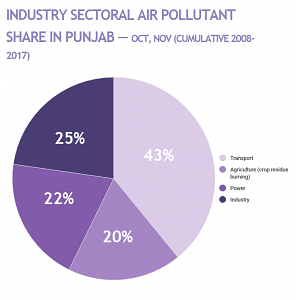
The Government of Punjab’s R-Smog report analysed different studies that consistently found that, in winter, most of the air parcels arriving over Lahore and the region were from the west and south-west — the ‘westerlies’, to be contrasted with the monsoon weather pattern that exhibited an ‘easterly’ transport of air masses. Sure, wind direction can change. It did, for example, on the evening of November 6, when vast swathes of Pakistani Punjab were suffocated with the smoke from crop burning across the border. But, by and large, other than during the monsoon, the winds in the region are from the west to the east.
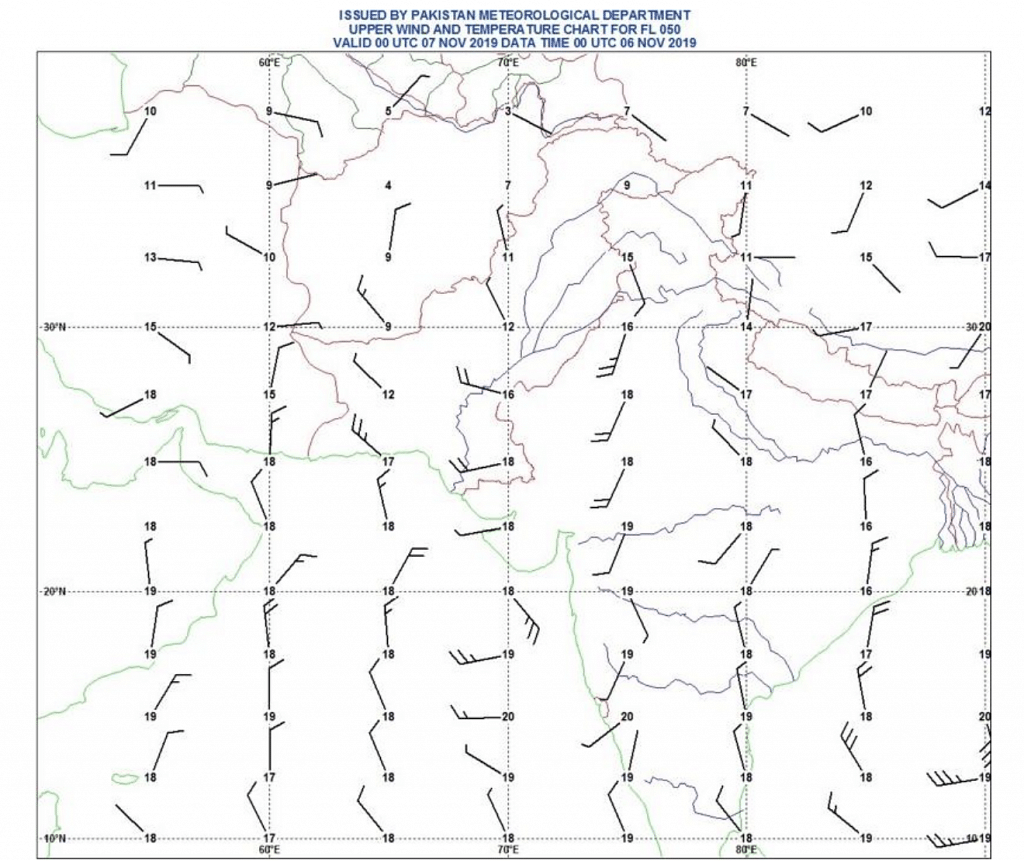
One must also keep in mind the time period of crop burning. The season begins to change and cool towards the end of October, coinciding with the Indian rice harvest. So, for a fortnight or so, vast parts of Indian Punjab and Haryana, for example, suffocate with the smoke of thousands of fires. The westerly winds transport these to Delhi, Lucknow, Patna and as far as Dhaka where, along the way, the fumes from the transport and energy sectors add to the suffocation. But our rice farmers are not far off. Our rice harvest comes approximately two weeks later, and so, for a fortnight in mid- to late-November, crop burning fires start all over our Punjab, adding to the haze and occasional smog event in the region.
The crop burning itself is quite a difficult policy issue to tackle. Farmers wanting to prepare their fields for the next crops but not having the means to rent or use plough machines, resort to torching crop stubble as an alternative. As of yet, neither the Indian nor our side has implemented a coherent plan to provide them an alternative.
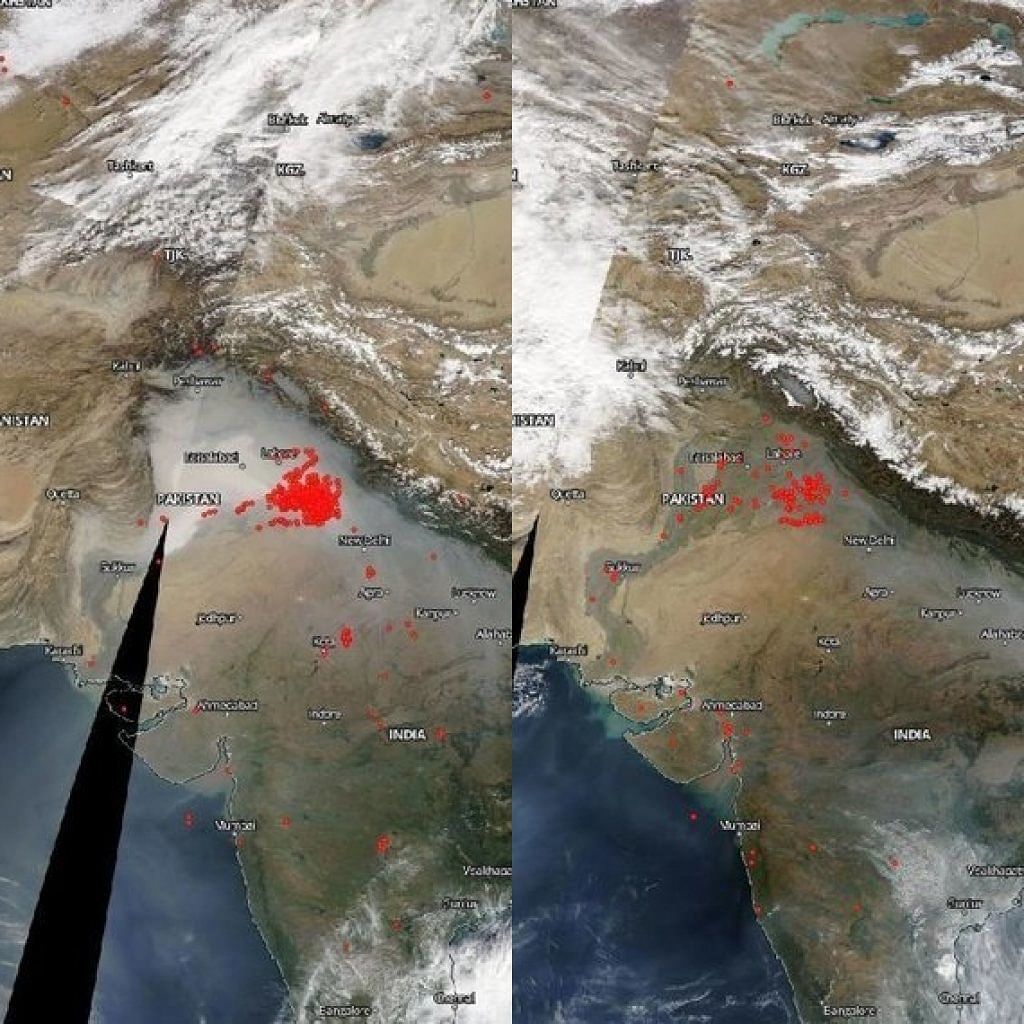
Also read: What is hydrogen fuel? Supreme Court’s solution to Delhi’s air pollution crisis
Clearing the air
Last year, Greenpeace carried out a global mapping of nitrogen dioxide (NO2), a harmful air pollutant produced by the burning of things such as diesel, coal, oil, gas and biomass (like crops). It identified Lahore as one of the top 50 global NO2 hotspots. The Greenpeace mapping was conducted between June and October 2018 using the EU’s Emissions Database for Global Atmospheric Emissions. But beyond identifying Lahore as a hotspot, the mapping reveals just how powerful satellite data capturing of air quality is. Dark red spots near Lahore identify industrial zones, and even a furnace oil independent power producer (IPP) operated by Nishat Power near Jambar Balan. A red blip over Pezu in Khyber Pakhtunkhwa is where Lucky Cement operates a coal-fired unit. The red plume between Islamabad and Peshawar represents the diesel trucks on GT Road, with a blip near Kohat identifying the coal-powered Kohat cement factory.
Remote satellite data not only shows the severity of air pollution, but can now take names and show regulators to the polluter’s doorstep. The debate now shouldn’t be about whether private meters are as reliable as the Environment Protection Agency’s (EPA), but about what we’re going to do to address the emissions from the transport, energy and industrial sectors.
The solutions aren’t radical. They aren’t new either. As early as 2005, when the federal government adopted the Pakistan Clean Air Programme, emissions from vehicles, industry, the burning of solid waste and natural dust were identified as the major sources of air pollution. The short- and long-term measures identified in the plan all revolved around the improvement of the quality of fuels used in the country. We should be at Euro II, a standard that reduced the limit for carbon monoxide emissions and the combined limit for unburned hydrocarbons and oxides of nitrogen for both petrol and diesel vehicles. But, at this point, other than one refinery, the quality of fuel and diesel used in Pakistan is some of the dirtiest in the world. The Lahore High Court’s decision in 2007 (Syed Mansoor Ali Shah vs. Government of Punjab 2007 CLD 533) to an air quality public interest litigation focused its directions on improving emissions from buses, motorcabs and motorcycle rickshaws. The Report of the Smog Commission, constituted by the Lahore High Court (Walid Iqbal vs. Federation of Pakistan PLD 2018 Lahore), reiterated 17 short- and long-term recommendations to combat smog. These included the prohibition of crop and municipal waste burning, the shutting down of brick kilns and steel-rerolling units near Lahore, the adoption of the Punjab Clean Air Action Plan and a number of public health-related measures. The Clean Air Action Plan itself lists nine measures to tackle vehicular pollution, seven for industrial pollution and urban pollution control.
So we’ve known about air pollution for years. We’ve known just how serious the effects of toxic air are, for years. And we’ve known the solutions to the problems for years. The courts have repeatedly taken up the matter in public interest or in suo motu. So why is it that nothing is happening? Why is it that we’ve suffered four years of smog season? Why is it that we knowingly consume air that is slowly killing us? Where is the change?
Also read: How Kolkata with electric buses and ferries plans to fight air pollution
Passing the buck
On the top of the list of things in the way of improving air quality is how the issue is treated by the public and its elected representatives. While air quality is bad year-round, it’s only really reported during the smog season. For the rest of the year, this public health emergency is largely ignored.
Public representatives have also shirked from their responsibilities. Every year since 2016, they have held Indian crop-burning as the reason for the smog season and downplayed the severity of the air quality emergency. In 2016, the chief minister of Pakistani Punjab wrote a letter to the chief minister of Indian Punjab, accusing Indian crop-burning for poor air quality. In 2017, the provincial environment minister blamed India. In 2018, the prime minister’s adviser on climate change said the air pollution was caused by smoke from India. And this year, the State Minister for Climate Change and Minister for Science and Technology did the same.
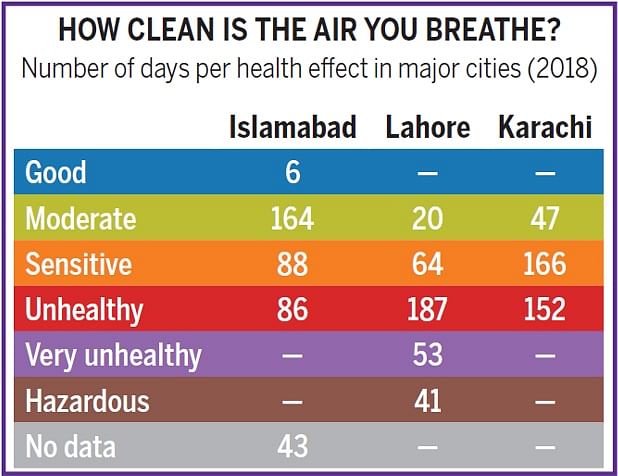
While not underestimating the severe repercussions of crop-burning on the Indian side, it’s simply not a wise policy to blame others for the problem. The way forward would be cooperation. The ASEAN Haze Agreement, between nearly a dozen South-East Asian countries, is the first of its kind. And while it’s not perfect, it is slowly showing results. It certainly didn’t get to where it is with countries hurling accusations at one another. In any event, Indo-Pak cooperation of anything, especially air quality, would have a huge impact for both countries on the international stage, and the goodwill they will receive can be leveraged to access some of the funds needed to finance the transition to cleaner air.
There is also a dearth of official air quality information. The EPA Punjab is mandated to monitor the Punjab Environmental Quality Standards for Ambient Air in the province but only has a handful of air quality monitors. They’re not enough to give a clear and real-time picture of air quality for Lahore, let alone the 36 districts of the province. The EPA will need a network of hundreds of air monitors to be able to properly monitor and forecast air quality in the province.
In the absence of official information, citizens’ initiatives like the Pakistan Air Quality Initiative (PAQI) has begun connecting small air quality monitors to the internet and providing the public with information about PM2.5 (particulate matter no smaller than 2.5 microns in diameter, one of the nine pollutants monitored by the PEQS for Ambient Air). By now, PAQI has developed a network of over a dozen monitors in Lahore as well as in Karachi, Faisalabad, Gujranwala, Islamabad and Peshawar. These are now complemented by the reference-standard air quality devices installed and operating at each of the US consulates in Karachi, Peshawar and Lahore and the US embassy in Islamabad. As a result, there is a fairly good air quality monitoring system for Lahore, and to some extent, Islamabad. However, instead of leveraging the power of this network, officials of the Ministry of Climate Change and the EPA Punjab have repeatedly rubbished this information as unreliable. This is extremely irresponsible, as these privately operated meters are the best source of reliable air quality information.
The reliability of these private machines shouldn’t be in doubt. Earlier this year, the same Air Visual devices installed by PAQI in Pakistan were relied upon by local authorities to shut down over 400 schools during an episode of air pollution. The Air Quality Index (another measure of ambient air pollution) in Bangkok that day was 175. It’s 133 and rising in Lahore as I write this piece on the evening of November 9. It was over 700 on November 6, forcing the Government of Punjab to issue a notification closing down all schools in Lahore the next day.
Also read: Blame-games and band-aids: Delhi is a classic example of how not to fight air pollution
A pollution-free future
The fact is that Lahore is not the first city to experience air pollution. Other cities have faced this issue and overcome them. They can be examples for us. What is common in cities like Los Angeles, New York, London, Paris, Mexico City, Beijing and Shanghai is that their air quality campaigns all began with a recognition of the problem and a vision of something better. It’s a vision of a pollution-free future that extends beyond the timeframe of the political cycle (elections are usually 3-5 years); and it’s this vision of a clean-air Pakistan that we don’t have yet.
Cleaning the air will also cost money. But it would be money well spent. Economies that have invested in cleaner fuels and cleaner and renewable sources of energy have all performed well. There is no example of a rich and dirty country or city today. In the Pakistani context, most of this money will have to be spent upgrading our refineries and improving the quality of fuels imported into the country and used in the transport and energy sectors. So far, the petroleum industry has managed to keep reform at bay, arguing a shortage of funds. But are we going to allow the slow poisoning of our society if a few oil companies don’t make money?
Not having the money is clearly no reason to not do anything. We deserve clean air. It’s time we asked for better — and stopped letting elected representatives and refineries shrug their basic responsibilities.
The author is an environment lawyer and member of the (as yet unconvened) Pakistan Climate Change Council.
This article was first published in Dawn.


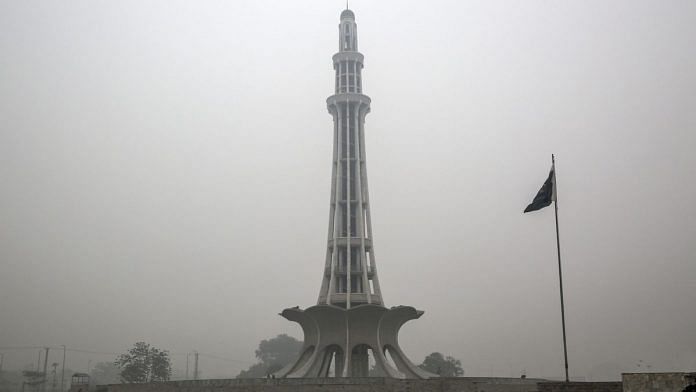

I attended pulmonary rehabilitation several years ago and learned the proper techniques for taking my medications, but the medications do not seem to work as well as they used to. Three months ago, I found (ww w. besthealthherbalcentre. c om) BEST HEALTH HERBAL CENTRE COPD HERBAL REMEDY. I thank God for this product! On July 4th I started taking BHHC COPD HERBAL REMEDY and 4 weeks later I could feel a change in energy, breathing back to normal and better sleep and I felt alive again! After 7 weeks of usage, my symptoms declined completely..Am presently living COPD free. You can expect to feel very tired and strange for a few weeks at first but don’t give up. So- all the best to my fellow sufferers..